-
Under the heavy quark effective theory (HQET), a semileptonic decay process can be related to a rotation of the heavy quark flavor or spin [1, 2]. In the limit
mQ→∞ (Q denotes a heavy quark or anti-quark), this rotation is a symmetry transformation. The form factors depend only on the Lorentz boostγ=v⋅v′ which connects the rest frames of the initial state and the final state. The transition can be described by a dimensionless functionξ(v⋅v′) . Heavy-quark symmetry reduces the weak-decay form factors of heavy hadrons to this universal function. These relations were derived by Isgur and Wise firstly [3, 4], the so-called Isgur-Wise function (IWF).The HQET vastly simplifies these calculations; thus, it plays a crucial role in extracting the values of
|Vcb| and|Vub| . For example, the differential semileptonic decay rate forB→D in the heavy-quark limit can be model-independently described by [2]dΓ(ˉB→Dℓˉν)dω=G2F48π3|Vcb|2(mB+mD)2m3D(ω2−1)3/2ξ2(ω).

(1) The decay rate depends on only two quantities,
|Vcb| andξ(ω) . If the differential semileptonic decay rate is measured by experiments, one can obtain the value of|Vcb|ξ(ω) . Exploiting the normalization of the Isgur-Wise functionξ(1)=1 , the value of|Vcb| can be extracted. Conversely, exploiting the given value of|Vcb| , the differential semileptonic decay rate can be obtained by calculating the Isgur-Wise function. However, the Isgur-Wise function cannot be calculated by perturbation theory in principle and can only be obtained by various phenomenological models. Obviously, the latter method is model-dependent. Then, substantial effort has been directed toward studying the Isgur-Wise function and its applications in different frameworks [5-16]. In a phenomenological model, the Isgur-Wise function usually corresponds to the overlapping integral of the wave functions.However, the leading order result is not sufficiently accurate because of the heavy quark approximation. The symmetry-breaking corrections are needed when the study becomes more precise, since the masses of the heavy quarks or anti-quarks are not actually infinite. In addition, the radiation correction cannot be ignored. The HQET provides a systematic framework to analyze these corrections. For example, Luke analyzed the
1/mQ corrections for a more complicated case of weak decay form factors [17]. Falk et al. analyzed the structure of1/m2Q corrections for weak decay form factors of both mesons and baryons and calculated the leading QCD radiative corrections [18, 19]. Other efforts of complements are too numerous to be listed here [20-22].The flavor-spin symmetry can be used for weak decays involving not only ground hardons, but also orbitally and radially excited states containing one heavy (anti-) quark. For example, Isgur and Wise exploited the flavor-spin symmetry to obtain model-independent predictions in weak decays from the pseudoscalar meson of a heavy quark
Qi to P wave excited states of another heavy quarkQj in terms of two Isgur-Wise functions [23]; other studies have also reported interesting results [24-27]. The HQET is not adopted here; therefore, we do not describe it in detail to avoid confusion.When systems contain two or more heavy degrees of freedom, the validity of HQET doubtful, but they are still best described in the nonrelativistic QCD (NRQCD). However, some studies have explored the application of the heavy quark symmetry to describe the weak decays of hadrons containing two heavy quarks. Sanchis-Lozano estimated the flavor symmetry loss, while the spin symmetry holds for the double-heavy meson [28]. A baryon containing two heavy quarks constitutes a bosonic diquark whose mass can be regarded as infinite; therefore, HQET still holds true for the diquark-light quark system. However, HQET is not suitable for dealing with the diquark subsystem. Ebert et al. exploited the relativistic quark model to obtain the diquark wave functions; then, the transition amplitudes of heavy diquarks bb and bc going respectively to bc and cc can be expressed through the overlap integrals of corresponding diquark wave functions [29]. Pathak et al. treated the
Bc meson as a typical heavy-light meson like B or D within a QCD potential model, and the semileptonic decay rates ofBc meson intoηc ,J/ψ are exploited [30]. Das et al. computed the slopes and curvatures of the form factors of semileptonic decays of heavy-light mesons includingBc [31]. The error of the result forBc is very large. Wang et al. obtained form factors forBc into the S-wave and P-wave charmonium using three universal Isgur-Wise functions [32]. Nearly all of these studies adopt the formulas in HQET directly, but the usefulness of the heavy quark symmetry to describe double heavy hadrons has seldom been reported.The aim of this paper is to investigate the heavy quark symmetry in double-heavy mesons from a phenomenological aspect free of the heavy quark limit. The heavy quark symmetry, if it holds roughly, must be reflected in the results obtained by a suitable phenomenological model without the employment of the heavy quark limit. The instantaneous Bethe-Salpeter (BS) equation is quite effective for dealing with double-heavy mesons. This method has a comparatively solid foundation because both the BS equation and the Mandelstam formula are established based on relativistic quantum field theory. Meanwhile, the instantaneous approximation is reasonable because the quark and antiquark in double-heavy mesons are both heavy. This method gives an analytical expression, so the symmetry can be found intuitively, although the accuracy may not be as good as in Lattice QCD. We choose the semileptonic
Bc decays to charmonium, and the final mesons involve the orbitally and radially excited states. It is concluded that the flavor symmetry breaks, while the spin symmetry holds for the double-heavy meson, as Sanchis-Lozano estimated [28]. The HQET is applicable to these decays in this paper from a phenomenological aspect because the spectator charm quark is not involved in the hard scattering over a short time scale, on the order of1/mW [32]. However, the form factors parameterized by a single Isgur-Wise function deviate seriously from the full ones, especially when excited states are involved. The relativistic corrections require the introduction of more non-perturbative universal functions, similar to the Isgur-Wise function.Previous studies of the IWF with the BS equation have been performed. Kugo et al. expanded the BS equation in the order of the inverse heavy quark mass and defined the leading term in the expansion of the first form factor as the IWF [33]. El-Hady et al. pointed out that the IWF can be related to the overlap integral of normalized meson wave functions in the infinite momentum frame and that it should be possible to calculate the form factors directly without using the heavy quark limit [34]. Zoller et al. calculated the numerical IWF by multiplying quark masses with a large factor directly [35]. Chang et al. obtained two universal functions in
Bc→hc,χc with the instantaneous BS method, but the wave functions they used are nonrelativistic [36, 37]. Recently, the instantaneous BS method has been developed to be quite covariant, and the full Salpeter equations are solved for differentJP(C) states [38-41]. Therefore, the relativistic correction, which equates to the symmetry-breaking correction, has better been taken into account. Note that in this paper we do not use HQET, but we rather attempt to examine the validity of HQET on double heavy mesons using the instantaneous BS method from a phenomenological aspect. The heavy quark limit is also not adopted here.This paper is organized as follows. In Sec. II, we give the relativistic wave function and Mandelstam formalism for the instantaneous BS method. In Sec. III, we extract the IWF and give the analytical results. In Sec. IV, we give the numerical results and discussions. We summarize and conclude in Sec. V, and the Salpeter equation and some wave functions are described in Appendix A.
-
Usually, the nonrelativistic wave function for a pseudoscalar is written as [36]
ΨP(→q)=(⧸P+M)γ5f(→q),

(2) where M and P are the mass and momentum of the meson, respectively;
→q is the relative momentum between the quark and antiquark, and the radial wave functionf(→q) can be obtained by solving the Schrodinger equation. However, in our method, we solve the full Salpeter equation. The form of the wave function is relativistic and should depend on theJP(C) quantum number of the corresponding meson. The relativistic wave function of a pesudosclar can be constructed using P,q⊥ , andγ -matrices [42]φ0−(q⊥)=M[⧸PMf1(q⊥)+f2(q⊥)+⧸q⊥Mf3(q⊥)+⧸Pq̸⊥M2f4(q⊥)]γ5,

(3) where
q=p1−α1P=α2P−p2 is the relative momentum between a quark (with momentump1 and massm1 ) and antiquark (momentump2 and massm2 ),α1=m1m1+m2 ,α2=m2m1+m2 ;q⊥=q−P⋅qM2P , in the rest frame of the meson,q⊥=(0,→q) .The quantum numbers of all items in Eq. (3) are
0− . This wave function is a general relativistic form for a pseudoscalar with the instantaneous approximation. If we drop theO(q̸⊥M) items and ignore the difference betweenf1 andf2 , Eq. (3) would be reduced to the Schrodinger wave function, Eq. (2).The procedure to solve the full Salpeter equation is given in Appendix A. The last two equations in Eq. (A9) are constraint equations; therefore, only two wave functions in Eq. (3) are independent. We retain
f1 andf2 and derive the normalization condition as∫d→q(2π)34f1f2M2{m1+m2ω1+ω2+ω1+ω2m1+m2+2→q2(m1ω1+m2ω2)(m2ω1+m1ω2)2}=2M,

(4) where the quark energy
ωi=√m2i−q2⊥=√m2i+→q2 (i=1,2 ). The projection operators are defined asΛ±i(qμ⊥)≡12ωi[⧸PMωi±(−1)i+1(⧸q⊥+mi)],

(5) and the positive energy wave function is
φ++0−(q⊥)≡Λ+1⧸PMφ⧸PMΛ+2=[A1(q⊥)+⧸PMA2(q⊥)+⧸q⊥MA3(q⊥)+⧸P⧸q⊥M2A4(q⊥)]γ5,

(6) where
A1=M2[ω1+ω2m1+m2f1+f2],A2=M2[f1+m1+m2ω1+ω2f2],A3=−M(ω1−ω2)m1ω2+m2ω1A1,A4=−M(m1+m2)m1ω2+m2ω1A1.

(7) In this paper, in addition to the
0− state, we also need to construct the wave functions for the1−− (J/ψ ),1+− (hc ),0++ (χc0 ),1++ (χc1 ), and2++ (χc2 ) states. We show the2++ state wave function in Appendix A, and the others can be found in [43].The transition amplitude element for
B+c→(cˉc)ℓ+νℓ shown in Fig. 1 readsT=GF√2Vcbˉuνℓγμ(1−γ5)vℓ⟨(cˉc)(Pf)|Jμ|B+c(P)⟩,

(8) where
(cˉc) denotes charmonium andJμ≡Vμ−Aμ is the charged current responsible for this decay. The hadronic part can be calculated using the overlapping integral over the initial and final wave functions, which we call the Mandelstam formalism. The wave function should be solved using the full relativistic BS equation, but this is difficult. Instead, we solve the instantaneous one, namely, the full Salpeter equation. The hadronic transition element should be approximated as [44]⟨(cˉc)|ˉbγμ(1−γ5)c|B+c⟩=∫d→q′(2π)3Tr[¯φ++Pf(→q′)⧸PMφ++P(→q)γμ(1−γ5)],

(9) where
φ++P denotes the positive energy wave function of the initial state and¯φ++Pf≡γ0(φ++Pf)†γ0 is that for the final state;→q′ is the relative momentum between a quark (with massm′1 ) and antiquark (massm′2 ) in the final state, and→q=→q′+m′1m′1+m′2→Pf . In this paper, we dropφ+−,φ−+,φ−− and keep only the positive energy componentφ++ , as those contributions are much smaller than 1% in theBc→(cˉc) transition [45]. The integral argument→q′ in Eq. (9) is convenient for the P-wave final state [37].For
B+c→Pℓ+νℓ (here, P denotesηc orχc0 ), the hadronic matrix element can be factorized as⟨P|ˉbγμ(1−γ5)c|B+c⟩=S+(P+Pf)μ+S−(P−Pf)μ,

(10) where
S+ andS− are the form factors. ForB+c→Vℓ+νℓ (here, V denotesJ/ψ ,hc , orχc1 ),⟨V|ˉbγμ(1−γ5)c|B+c⟩=(t1Pμ+t2Pμf)ϵ⋅PM+t3(M+Mf)ϵμ+2t4M+MfiεμνσδϵνPσPfδ,

(11) where
ϵμ is the polarization vector of the final vector meson;t1 ,t2 ,t3 , andt4 are the form factors. ForB+c→Tℓ+νℓ (here, T denotesχc2 ),⟨T|ˉbγμ(1−γ5)c|B+c⟩=(t1Pμ+t2Pμf)ϵαβPαPβM2+t3(M+Mf)×ϵμαPαM+2t4M+MfiεμβσδϵαβPαMPσPfδ,

(12) where
ϵαβ is the polarization tensor of the final tensor meson;t1 ,t2 ,t3 , andt4 are the form factors. In this paper, we focus only on the form factors, but not the decay widths. -
Because the binding energy is on the order of
ΛQCD , which is smaller than the constituent quark mass inBc and charmonium, the approximationωi≡√m2i+→q2≈mi+→q22mi

(13) is employed. In the numerical calculation, the large
|→q| contribution will be suppressed by the wave functionfi(→q) . After performing this approximation and the trace on the matrix element Eq. (9), all the form factors depend only on the overlapping integrals of the wave functions for the initial state and the final state. For instance, one type of overlapping integral is∫d→q′(2π)3f1(|→q|)f′1(|→q′|),∫d→q′(2π)3f1(|→q|)f′2(|→q′|),

∫d→q′(2π)3f2(|→q|)f′1(|→q′|),∫d→q′(2π)3f2(|→q|)f′2(|→q′|),

(14) where
fi denotes the wave function of the initial state andf′i denotes the wave function of the final state. Two wave functions from the same meson are very similar numerically, i.e.,f1≈f2 andf′1≈f′2 . Therefore, the four overlapping integrals in Eq. (14) are approximately equal, and for convenience, they are replaced by their average, which is denoted asξ00(v⋅v′)=C∫d→q′(2π)3¯ff′,

(15) where C is the normalization coefficient;
v,v′ are the four dimensional velocities of the initial state and final state, respectively, and¯ff′=f1f′1+f1f′2+f2f′1+f2f′24 . There are other overlapping integrals with the relative momentum→q′ being inserted. It is immediately clear that they are the relativistic (1/mQ ) corrections to the leading order form factors, which are parameterized by a single functionξ00 . They are denoted asξqx , where subscript q denotes the power of the relative momentum→q′ , subscript x denotes the power ofcosθ , andθ is the angle between→q′ and→Pf , i.e.,ξ11=C∫d→q′(2π)3¯ff′|→q′|cosθ√MM′,ξ20=C∫d→q′(2π)3¯ff′→q′2MM′,ξ22=C∫d→q′(2π)3¯ff′→q′2cos2θMM′,ξ31=C∫d→q′(2π)3¯ff′|→q′|3cosθ√(MM′)3,ξ33=C∫d→q′(2π)3¯ff′|→q′|3cos3θ√(MM′)3,ξ40=C∫d→q′(2π)3¯ff′→q′4(MM′)2,ξ42=C∫d→q′(2π)3¯ff′→q′4cos2θ(MM′)2,

(16) and so on. When the final state is an S-wave meson, we keep the first six functions and drop the higher order
O(q4) ; when the final state is a P-wave meson, whose wave function includes a factor→q ,ξ00 disappears. Thus, we reserve the first eight functions and drop the higher orderO(q5) . The normalization coefficients C based on the normalized formulas are shown in Table 1 for each process. Taking the processBc→ηc as an example, the initial and final states are both the0− state. With the approximations→q=0 ,f1=f2 , andωi=mi , Eq. (4) is deduced to befinal state ηc 

J/ψ 

hc 

χc0 

χc1 

χc2 

C 

4√MM′ 

4√MM′ 

4M√3 

4M 

4√23M 

4MM′√3 

Table 1. Normalization coefficients of different processes.
∫d→q(2π)34Mf2=1.

(17) Therefore, the normalized wave function of the
0− state is2√Mf , and the normalization coefficient is4√MM′ for the processBc→ηc . The above approximation is only used to determine the normalization coefficient, but not elsewhere.The form factors of the semileptonic decay
Bc→ηcℓνℓ can be written asS+=−M+M′2√MM′ξ00+14√MM′[b11m1+b21m2]αξ00+14P′[−b11m1−b21m2+a11m′1+a21m′2]ξ11+(M−M′)P′28√MM′1m1m2α2ξ00+P′8[(E′+M′)(1m1m′1+1m2m′2)+(E′−M′)(1m1m′2+1m2m′1)−(M−M′)1m1m2]αξ11+√MM′8[(M−M′)(1m1m2−1m1m′2−1m2m′1+1m′1m′2)−(M+M′)(1m1m′1+1m2m′2)]ξ20+√MM′8(M−E′)[1m1m′1+1m1m′2+1m2m′1+1m2m′2]ξ22−P′216√MM′[b11m31+b21m32]α3ξ00+P′16[b13m31+b23m32+a11m1m2m′2+a21m1m2m′1]α2ξ11−√MM′16[b1(1m31−1m2m′1m′2)+b2(1m32−1m1m′1m′2)]αξ20−√MM′8[b11m31+b21m32+a11m1m2m′2+a21m1m2m′1]αξ22+MM′16P′[b1(1m31−1m2m′1m′2)+b2(1m32−1m1m′1m′2)−a1(1m′31−1m1m2m′2)−a2(1m′32−1m1m2m′1)]ξ31,

(18) where
a1=E′2−E′M+E′M′−MM′=M′(E′−M)(ω+1) ,a2=E′2−E′M−E′M′+MM′=M′(E′−M)(ω−1) ,b1=MM′−E′M′+E′M−M′2=M′(M−M′)(1+ω) ,b2=MM′−E′M′−E′M+M′2=M′(M+M′)(1−ω) ,b1=→P2f−a1 , andb2=a2−→P2f .S−=M−M′2√MM′ξ00+14√MM′[−c11m1+c21m2]αξ00+14P′[c11m1−c21m2+d11m′1+d21m′2]ξ11−(M+M′)P′28√MM′1m1m2α2ξ00+P′8[(M′+E′)(1m1m′1+1m2m′2)+(E′−M′)(1m1m′2+1m2m′1)+2(M+M′)1m1m2]αξ11+√MM′8[(M+M′)(−1m1m2+1m1m′2+1m2m′1−1m′1m′2)+(M−M′)(1m1m′1+1m2m′2)]ξ20−√MM′8(M+E′)[1m1m′1+1m1m′2+1m2m′1+1m2m′2]ξ22

+P′216√MM′[c11m31−c21m32]α3ξ00+P′16[−c13m31+c23m32+d11m1m2m′2+d21m1m2m′1]α2ξ11+√MM′16[c1(1m31−1m2m′1m′2)−c2(1m32−1m1m′1m′2)]αξ20−√MM′8[c11m31−c21m32−d11m1m2m′2−d21m1m2m′1]αξ22+MM′16P′[−c1(1m31−1m2m′1m′2)+c2(1m32−1m1m′1m′2)−d1(1m′31−1m1m2m′2)−d2(1m′32−1m1m2m′1)]ξ31,

(19) where
c1=E′M+E′M′+MM′+M′2 ,c2=E′M−E′M′−MM′+M′2 ,d1=E′2+E′M+E′M′+MM′ ,d2=E′2+E′M−E′M′−MM′ ,c1=d1−→P2f , andc2=d2−→P2f .The function
ξ00 is just the Isgur-Wise function appearing in HQET for0−→0− decays. Because the form factors of this process will degenerate into those under the nonrelativistic limit if only the functionξ00 is considered [2],⟨ηc|ˉbγμ(1−γ5)c|B+c⟩=−√MMf[vμ+vμf]ξ00,S±=∓M±M′2√MM′ξ00.

(20) Eq. (18) and Eq. (19) clearly show that the other functions
ξqx(q≠0) are the relativistic corrections (1/mi corrections) to the leading order form factors, which are parameterized by a single IWFξ00 , where i denotes a quark or anti-quark in the initial and the final mesons. The number of→q′ contained in the functionξqx (subscript q) corresponds to the order of the correction. Note that there should have been another type of overlapping integral with the relative momentum→q in the initial state. For example,C∫d→q′(2π)3¯ff′|→q|cosβ√MM′,

(21) where
β is the angle between→q and→Pf . Because of the relation→q=→q′+α→Pf,α=m′1m′1+m′2 , this overlapping integral Eq. (21) is decomposed intoξ11+α|→Pf|ξ00 . Therefore, the item involvingαξ00 should be considered as a relativistic correction on the same order asξ11 . Generally, the item involvingαnξqx is theq+n order relativistic correction (1/mq+ni correction), which can be confirmed in Eqs. (18) and (19). The process0−→1−− is the same as in the above case. The leading order result agrees with HQET [2], i.e.,⟨J/ψ|ˉbγμ(1−γ5)c|B+c⟩=√MMf[ϵ⋅vvμf−(v⋅vf+1)ϵμ+iεμνσδϵνvσvfδ]ξ00.

(22) It is natural that the leading order analytical results in this paper, Eq. (20) and Eq. (22), are entirely consistent with HQET for
0−→0− or1−− processes. Because, for the leading order results, the terms involving⧸q disappear andωi=mi , the BS wave functions degenerate into the nonrelativistic case, i.e.,0−:M+⧸P2√Mγ5Ψ,1−−:M+⧸P2√M⧸ϵΨ.

(23) A pseudoscalar meson and its corresponding vector have the same radial wave function
Ψ in the nonrelativistic limit. However, in this paper, the radial wave functions are obtained by solving the BS equation numerically, and theΨ in Eq. (23) corresponds to the normalized wave function2√Mfi , wherefi are the independent components of the BS wave function, similar tof1 andf2 in Eq. (3). Because we do not use the heavy quark limit, the normalized radial wave functions of a pseudoscalar meson and its corresponding vector are not exactly the same numerically; see Figs. 2(b) and 2(c). Furthermore, the normalized radial wave functions ofBc andηc differ greatly; see Figs. 2(a) and 2(b). Then, the IWFξ00 in this paper is not the leading order result in HQET, but the corrected IWF in HQET, which contains the relativistic corrections (1/mQ corrections). However, our results in section 4 show that the form factors parameterized by this corrected IWFξ00 still deviate seriously from the full ones, especially involving the excited states, even if the relativistic (1/mQ corrections) correction toξ00 has been taken into account. It is therefore necessary to introduce more non-perturbative universal functionsξqx(q≠0) to obtain more accurate form factors. We call these the high order correction functions below.For a P-wave meson as the final state, the nonrelativistic wave functions are usually written as
0++:⧸q⊥|→q |M+⧸P2√MΦ,1++:iεμναβ√32PνMqα⊥|→q |ϵβM+⧸P2√MγμΦ,2++:√3ϵμνγμqν⊥|→q |M+⧸P2√MΦ,1+−:√3q⊥⋅ϵ|→q |M+⧸P2√Mγ5Φ,

(24) and these states have the same radial wave function
Φ . Similarly, in this paper, the radial wave functions are obtained by solving the BS equation numerically, and theΦ in Eq. (24) corresponds to the normalized wave function. In these cases,ξ00 disappears andξ11 is just the corrected IWF appearing in HQET forS→P wave decays. We give the leading order results in the case where only the functionξ11 is considered,\begin{aligned}[b] \langle h_c|\bar b\gamma^{\mu}(1-\gamma^5)c|B_c^+\rangle =& \sqrt{3MM_f}\frac{v\cdot v_f}{|\vec v_f|}(\epsilon\cdot v)\left[v^{\mu}+v_f^{\mu}\right]\xi_{11},\\ \langle \chi_{c0}|\bar b\gamma^{\mu}(1-\gamma^5)c|B_c^+\rangle =& -\sqrt{MM_f}\frac{v\cdot v_f+1}{|\vec v_f|}\left[v\cdot v_fv^{\mu}-v_f^{\mu}\right]\xi_{11},\\ \langle \chi_{c1}|\bar b\gamma^{\mu}(1-\gamma^5)c|B_c^+\rangle =& \sqrt{\frac{3MM_f}{2}}\frac{v\cdot v_f}{|\vec v_f|}\left[\epsilon\cdot v(v^{\mu}-v\cdot v_fv_f^{\mu})\right.\\ & \left.+\vec v_f^2\epsilon^{\mu}+{\rm{i}}(v\cdot v_f+1)\varepsilon^{\mu\nu\sigma\delta}\epsilon_{\nu} v_{\sigma} v_{f\delta}\right]\xi_{11},\\ \langle\chi_{c2}|\bar b\gamma^{\mu}(1-\gamma^5)c|B_c^+\rangle =& -\sqrt{3MM_f}\frac{v\cdot v_f}{|\vec v_f|}\left[\epsilon_{\alpha\beta}v^{\alpha} v^{\beta} v_f^{\mu}\right.\\ & \left.-(v\cdot v_f+1)\epsilon^{\mu\alpha}v_{\alpha} \\ & +{\rm{i}}\epsilon_{\alpha\beta}v^{\alpha}\varepsilon^{\mu\beta\sigma\delta}v_{\sigma} v_{f\delta}\right]\xi_{11}.
\end{aligned}
(25) These results do not agree with Ref. [32]. The latter analyzes the reduction of form factors in the heavy quark limit, and there are two IWFs
ξE,ξFvα for theBc to P-wave charmonium, while in this paper, the leading order form factors depend only on the IWFξ11 . Ref. [32] does not further describe the used IWFsξE,ξFvα . This disagreement requires further examination. Note that the above analytical results are not confined to the processes ofBc to charmonium, but hold true for each possible process whose initial and final mesons have the sameJPC as Eqs. (20), (22), and (25). In the next section, we will give the numerical results and discussion of the specific processes. -
The parameters used in this paper are as follows:
ΓBc=1.298× 10−12 GeV, GF=1.166×10−5 GeV−2, mb=4.96 GeV, mc=1.62 GeV,Mhc(2P)=3.887GeV,Mχc0(2P)=3.862GeV, Mχc1(2P)= 3.872GeV,Mχc2(2P)=3.927GeV .After solving the corresponding full Salpeter equations, the numerical wave functions for different mesons are obtained, as shown in Figs. 2-3. When
|→q| is large, the wave functions will decrease rapidly. Therefore, the approximation Eq. (13) can be applied here, and the error from large|→q| will be suppressed by the wave function. The numerical values of two dominant (independent) components of the BS wave function are almost equivalent for each meson, so the approximation that the four overlapping integrals in Eq. (14) are replaced by their average is reasonable. For1−− or2++ states, there are two other minor (also independent) components of the BS wave function,g3,g4 , andg3≈−g4 . Taking the approximationg3=−g4 and the approximation Eq. (13),g3,g4 only appear in theO(q4) or higher order in the1−− state BS wave function. Within the precisionO(q3) of this study for the process0−→1−− , these two minor wave functionsg3,g4 disappear. Similar results hold for the2++ state wave function. These are consistent with Eqs. (23) and (24), in which there is only one radial wave function.The behaviors of the IWF
ξ00 and high-order correctionsξqx , i.e., the overlapping integrals of the wave functions of the initial and final bound states, are computed numerically and plotted in Figs. 4-5, whereω=v⋅vf=P⋅PfMMf . These IWFs can be classified into four categories according to the configurationsnL of the initial and final states. They belong to the modes1S→1S ,1S→1P ,1S→2S , and1S→2P . In each mode, for example, in the processesBc→ηc andBc→J/ψ , the behaviors of IWFs are virtually identical, except for their argumentω=v⋅vf . This is because these decay processes are simply related by a rotation of the heavy-quark spin or the meson spin and this rotation is a symmetry transformation in the infinite-mass limit. Note that the infinite-mass limit is not used in this paper, but this spin-symmetry is reflected in the results automatically, as Figs. 4-5 show. This indicates that the spin-symmetry still holds, even though the initial and final states are both double-heavy mesons. Comparing the different modes, for example, where the finalηc turns intoηc(2S) , the behaviors of IWFs differ significantly from before. Next, we will discuss these four modes one by one.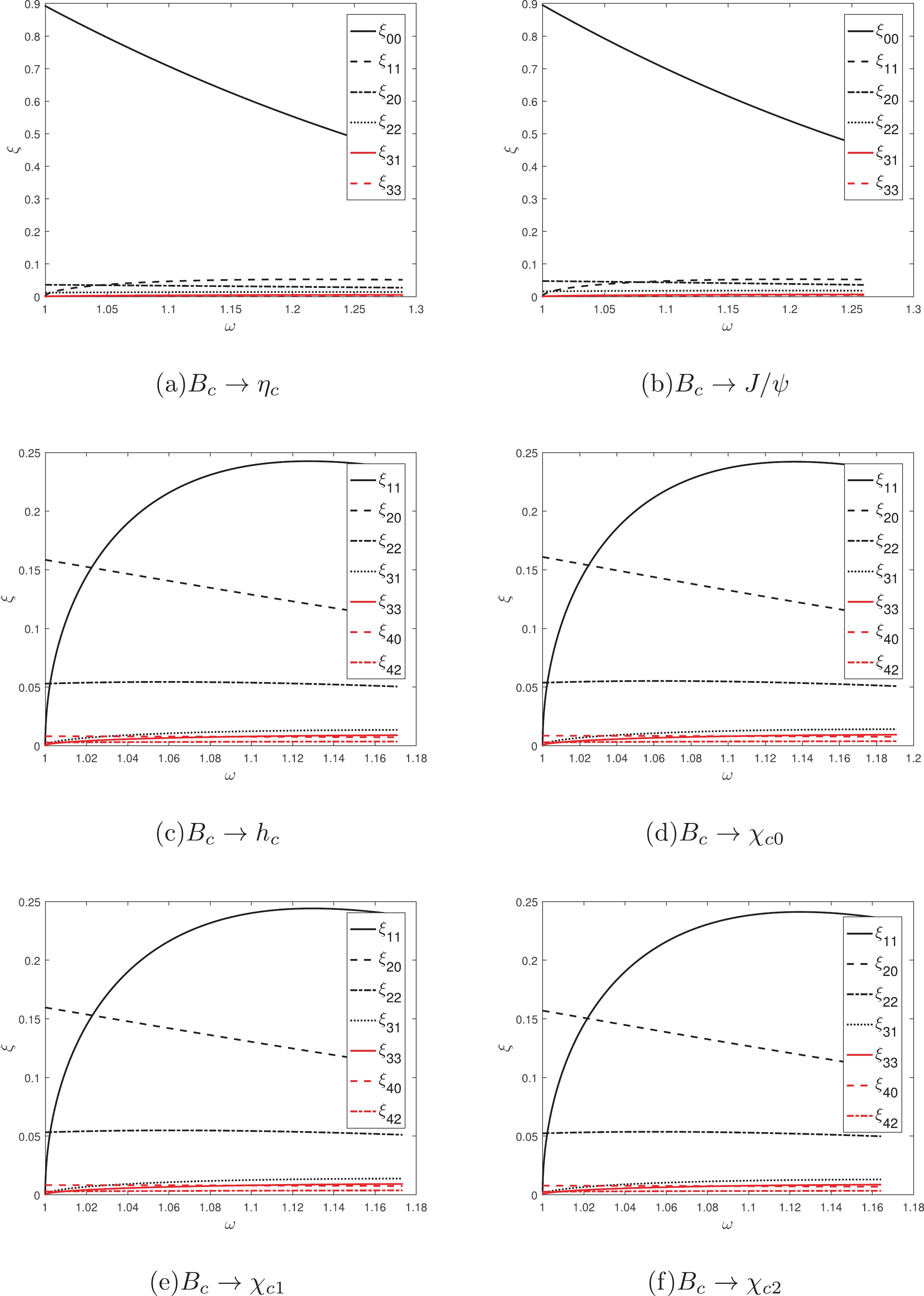
Figure 4. (color online) IWF and high-order corrections
ξqx vs.ω forBc to charmonium (n=1 ), whereω=v⋅vf=P⋅PfMMf . The solid line is the Isgur-Wise function, the dashed and dotted-dashed lines are the first order correction functions, the dotted line is the second order correction function, and so on, in every subfigure.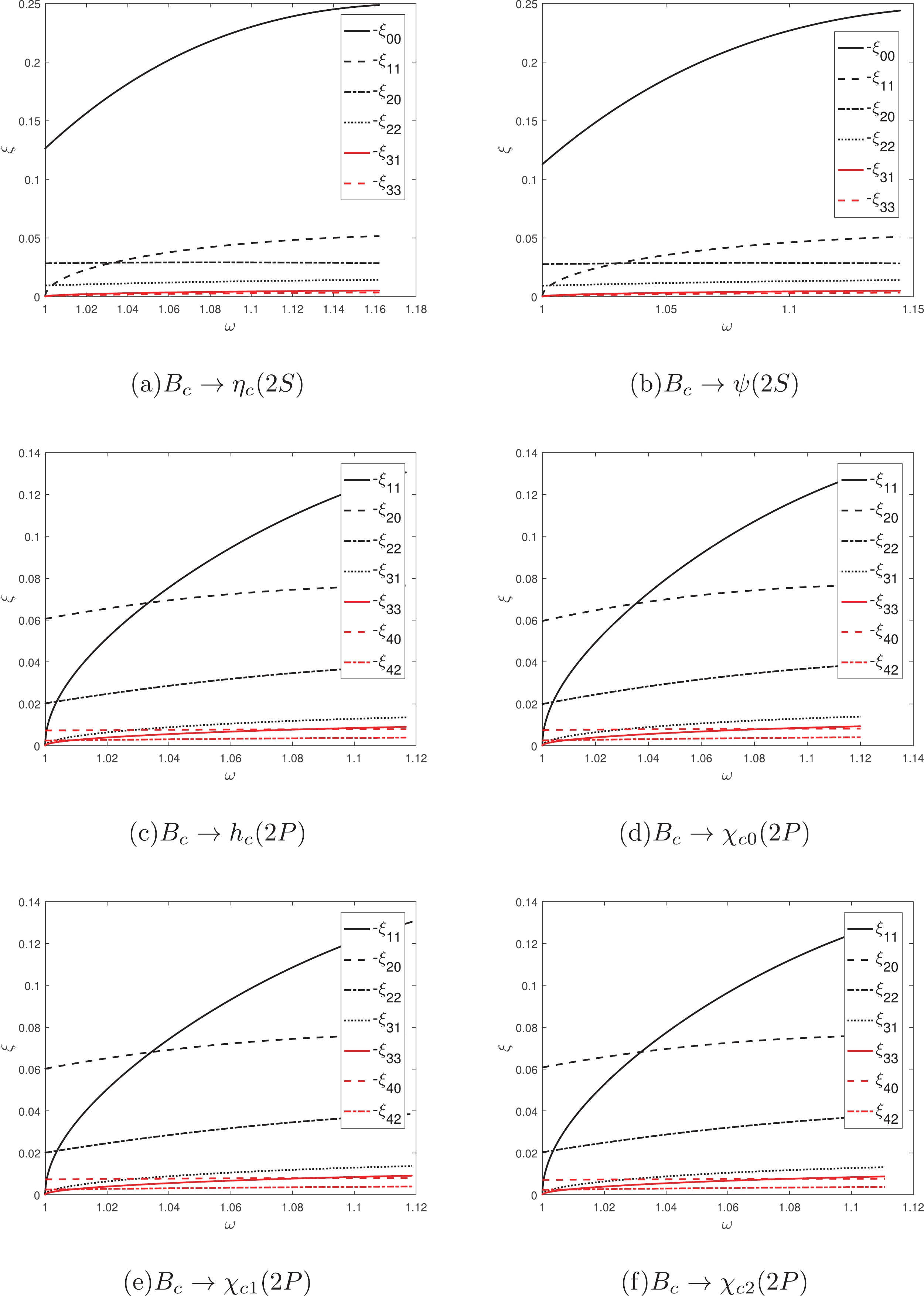
Figure 5. (color online) IWF and high-order corrections
ξqx vs.ω forBc to charmonium (n=2 ), whereω=v⋅vf=P⋅PfMMf . The meaning of each line type is the same as that in Fig. 4.The mode
1S→1S has been extensively studied in HQET.Bc andηc are related by the replacementb→c , whileηc andJ/ψ are related by the transformationc⇑→c⇓ here. These two rotations (flavor and spin rotations) are symmetry transformations in the infinite-mass limit. Therefore, the radial wave functions of these mesons will be identical in this limit, and the corresponding IWF at zero recoil, i.e.,ξ(1) will be the same as the normalization formula of wave functions. It is very natural thatξ(1)=1 in HQET. In this paper, we solve the full Salpeter equations without the infinite-mass limit, and the normalized radial wave function is approximated to2√Mf for the1S state. The normalized wave functions have little difference forηc andJ/ψ (two dominant wave functions), which is consistent with Eq. (23). However, the discrepancy betweenBc and the former two is on the order of 30% (peak value), as Figs. 2(a)-2(c) show. This indicates that in the double-heavy system, the spin-symmetry holds, while the flavor-symmetry breaks. The quark and antiquark masses are on the same order of magnitude; therefore, the change in flavor will have a large effect. Although the analytical expressions (Eq. (20) and Eq. (22)) of the form factors parameterized by a single IWFξ00 are the same as those in HQET, these IWFsξ00 are not strictly unity at zero recoil in this paper, as Figs. 4(a)-4(b) show. The relativistic correction (1/mQ correction) reflected in IWFξ00 is approximately 10% at zero recoil, which is consistent with the estimate from HQET [2]. In the mode1S→1S , it is convenient to fit the IWF asξ00(ω)=ξ00(1)[1−ρ2(ω−1)+c(ω−1)2],

(26) where
ρ2 is the slope parameter and c is the curvature parameter that characterizes the shape of the IWF. The slope by fitting is 2.25 inBc→ηc and 2.38 inBc→J/ψ . These results agrees with the rule that the slope increases as the (reduced) mass becomes heavier [11, 31]. Note that the fitting Eq. (26) is only used to compare our slopes with other studies, but is not used elsewhere in this manuscript. The other functionsξqx are the relativistic corrections to the form factors parameterized by a single IWFξ00 . The more→q′ the correction function contains, the less contribution it makes. We may call the correction function with one relative momentum→q′ the first order correction, the correction function with two→q′ the second order correction, and so on. The values ofξ11 are approximately 1/20 of those ofξ00 , as Figs. 4(a)-4(b) show. Because the decay width is proportional to the modular square of amplitude, the first order correction to the decay width may reach 1/10 of the leading order result, which is important for accurate calculation. Our previous study shows that the higher order relativistic corrections also have considerable contributions, and the total relativistic correction can reach approximately 20% at the level of decay width [43].In the mode
1S→1P , the configuration of the initial state is1S , while the configuration of the final state is1P . Their orbital angular momenta are different, so the symmetry transformations exist only between the final states, i.e., spin rotations.χc0 ,χc1 , andχc2 are spin triplet states that are related by the rotation of the total spin component (the component of total spin in the direction of orbital angular momentum), whilehc and the former three are related by the transformationc⇑→c⇓ . These two spin rotations are symmetry transformations in the infinite-mass limit, so the normalized radial wave functions of these mesons will be identical. The infinite-mass limit is not adopted here, and the normalized radial wave functions of these mesons are approximated as2|→q|h√3M,2|→q|ϕ√M,2√2|→q|ψ√3M , and2√M|→q|ζ√3 respectively, whereh,ϕ,ψ , andζ are the independent components of the BS wave functions. Their numerical results are almost the same, as Figs. 2(d)-2(f) shows, which is consistent with Eq. (24). This indicates that the spin-symmetry holds in the P-wave charmonium, even though the quark and anti-quark have the same masses. Because the P-wave function contains a→q ,ξ00 disappears, and the IWF isξ11 , whose behavior is obviously different from that ofξ00 . Because of the presence ofcosθ , see Eq. (16), the IWFξ11 is zero at zero recoil, and it is enhanced kinematically, as Figs. 4(c)-4(e) shows. This behavior agrees with Ref. [37]. There is a kinematically suppressed factor1/|→vf| in the form factors Eq. (25); therefore, the behaviors of the leading order form factors are not purely dependent onξ11 . Further,ξ20 andξ22 are comparable with the leading orderξ11 , especially at zero recoil.ξ22 is smaller thanξ20 because of the factorcos2θ . They decrease slowly when the momentum recoil increases; therefore, the relativistic corrections may be comparable with the nonrelativistic results in this mode. Although the other correction functions seem to be very small, they are still important for accurate calculation, just as in the mode1S→1S . For the final stateshc ,χc0 ,χc1 , andχc2 , the total relativistic corrections are 50%, 64%, 34%, and 14% at the level of decay width, respectively [43]. The total relativistic correction ofBc→χc2 is unusually small because the different order corrections cancel each other out. This can be seen in the following analysis of form factors.In the mode
1S→2S , the configuration of the initial state is different from that of the final state. Similarly, the only symmetry transformation is the spin rotationc⇑→c⇓ , which relatesηc(2S) withψ(2S) . Their normalized wave functions are almost the same, as Fig. 3(a)-3(b) shows, which is consistent with Eq. (23). The numerical results of the IWFs in this mode are negative. Although the signs of the IWFs do not affect the width, the negative values of the IWFs indicate that the negative parts of2S -wave functions play a primary role. The overlapping integral of wave functions∫d→q=∫→q2sinθd|→q|dθdϕ contains a factor→q2 . It is suppressed when|→q|<1 , while it is enhanced when|→q|>1 . The negative parts of2S -wave functions are mostly in the range of|→q|>1 , so the negative parts play a primary role in the overlapping integral. The IWFξ00 is increasing together with the momentum recoil, as Figs. 5(a)-5(b) show, and the leading order form factors have the same behaviors, according to Eqs. (20) and (22). The behaviors of other correction functions in this mode are similar to1S→1S , but they make more contributions here. For example,ξ11 andξ20 are approximately one fifth and one eighth ofξ00 at the maximum recoil, respectively. Therefore, the relativistic corrections become greater, and our previous study shows that they are approximately 19%–28% larger than those in the mode1S→1S [43].Compared with the mode
1S→1P , the analysis of the symmetry and normalized wave functions is the same in1S→2P , as Figs. 5(c)-5(e) show. The IWFξ11 is also zero at zero recoil, but it increases more slowly.ξ20 andξ22 are comparable with the IWFξ11 , and they are no longer decreasing; in contrast, they increase as the momentum recoil increases. Therefore, the relativistic corrections may be more significant in this mode. They are approximately 10%–16% larger than those in the mode1S→1P [43].The above analysis of relativistic corrections is qualitative because the kinematic factors multiplied by the IWFs are different and complex. To discuss these relativistic corrections precisely, the form factors in these processes need to be calculated by different order corrections in turn. These numerical results are compared with those calculated using the instantaneous Bethe-Salpeter method directly, as Figs. 6-13 show. In these Figs,
t≡(P−Pf)2 is the momentum transfer andtm is the maximum of t, sotm−t=2MMf(v⋅v′−1) . The circle-solid line (BSE) denotes the form factor calculated using the instantaneous Bethe-Salpeter method directly, and we regard it as the more precise result because this method is almost covariant; the solid line denotes the leading order (LO) of the form factor calculated only using the IWF; the dashed line denotes the result with the IWF and first order (1st) correction; the dotted-dashed line denotes the result with the IWF and the first and second order (2nd) corrections; the dotted line denotes the result with IWF and the first, second, and third order (3rd) corrections.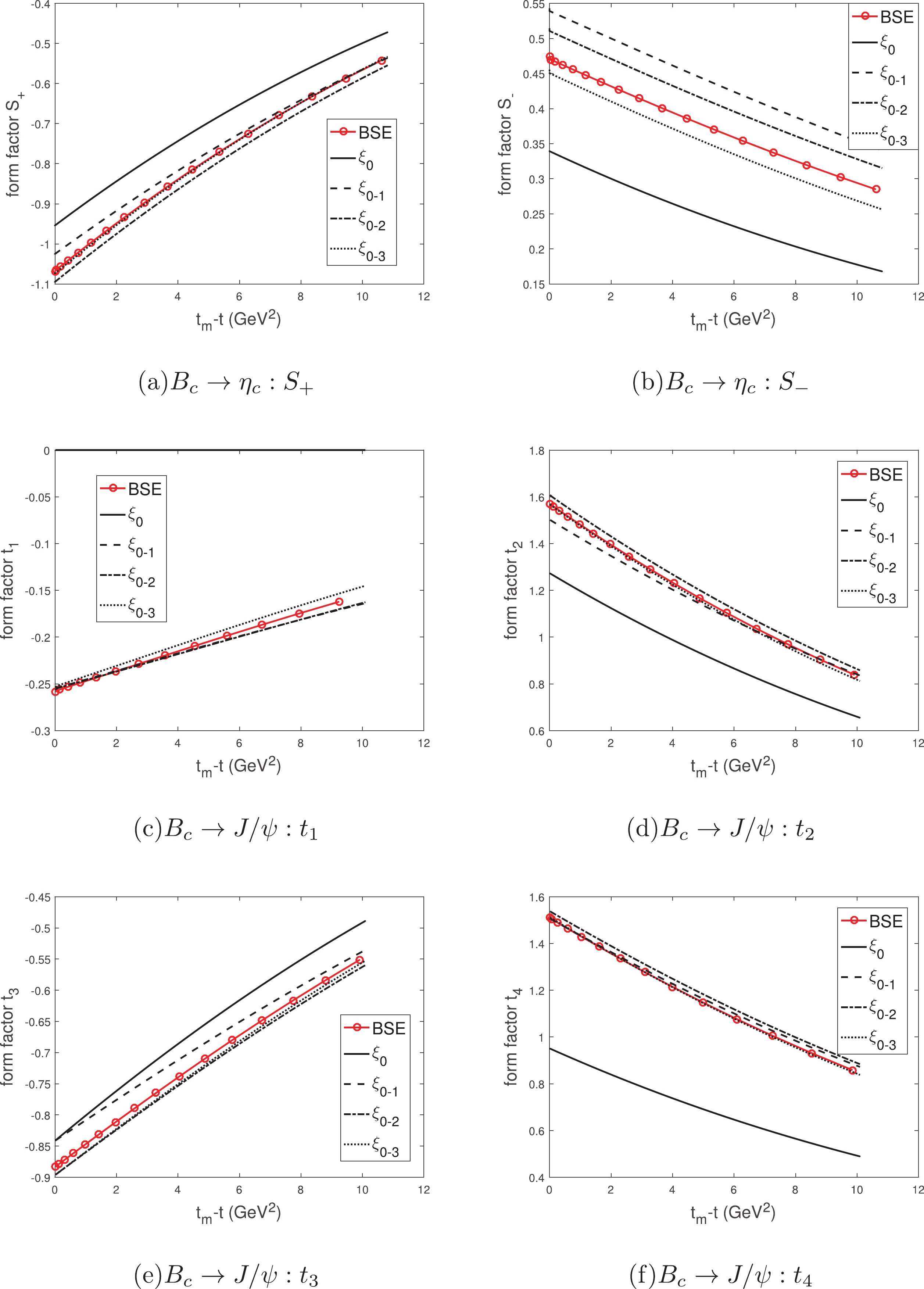
Figure 6. (color online) The form factors of
Bc→ηc,J/ψ calculated using the IWFs and instantaneous BS method, wheret≡(P−Pf)2 is the momentum transfer andtm−t=2MMf(v⋅v′−1) . The circle-solid line denotes the form factor calculated using the instantaneous Bethe-Salpeter method directly; the solid line denotes the leading order of the form factor calculated only using the IWF; the dashed line denotes the result with the IWF and first order correction; the dotted-dashed line denotes the result with the IWF and the first and second order corrections; the dotted line denotes the result with the IWF and the first, second, and third order corrections.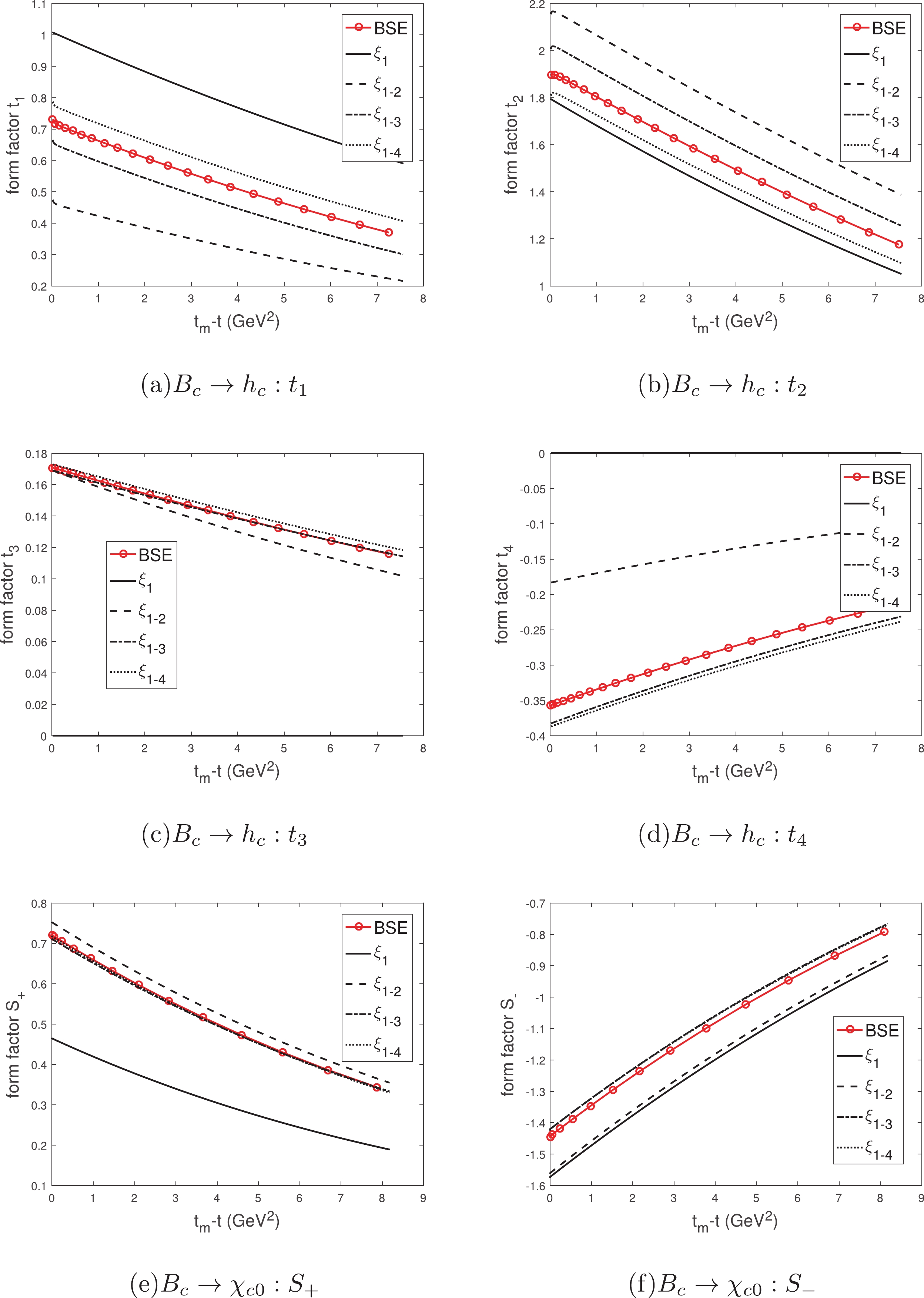
Figure 7. (color online) The form factors of
Bc→hc,χc0 calculated using the IWFs and instantaneous Bethe-Salpeter method, wheret≡(P−Pf)2 is the momentum transfer andtm−t=2MMf(v⋅v′−1) . The meaning of each line type is the same as that in Fig. 6.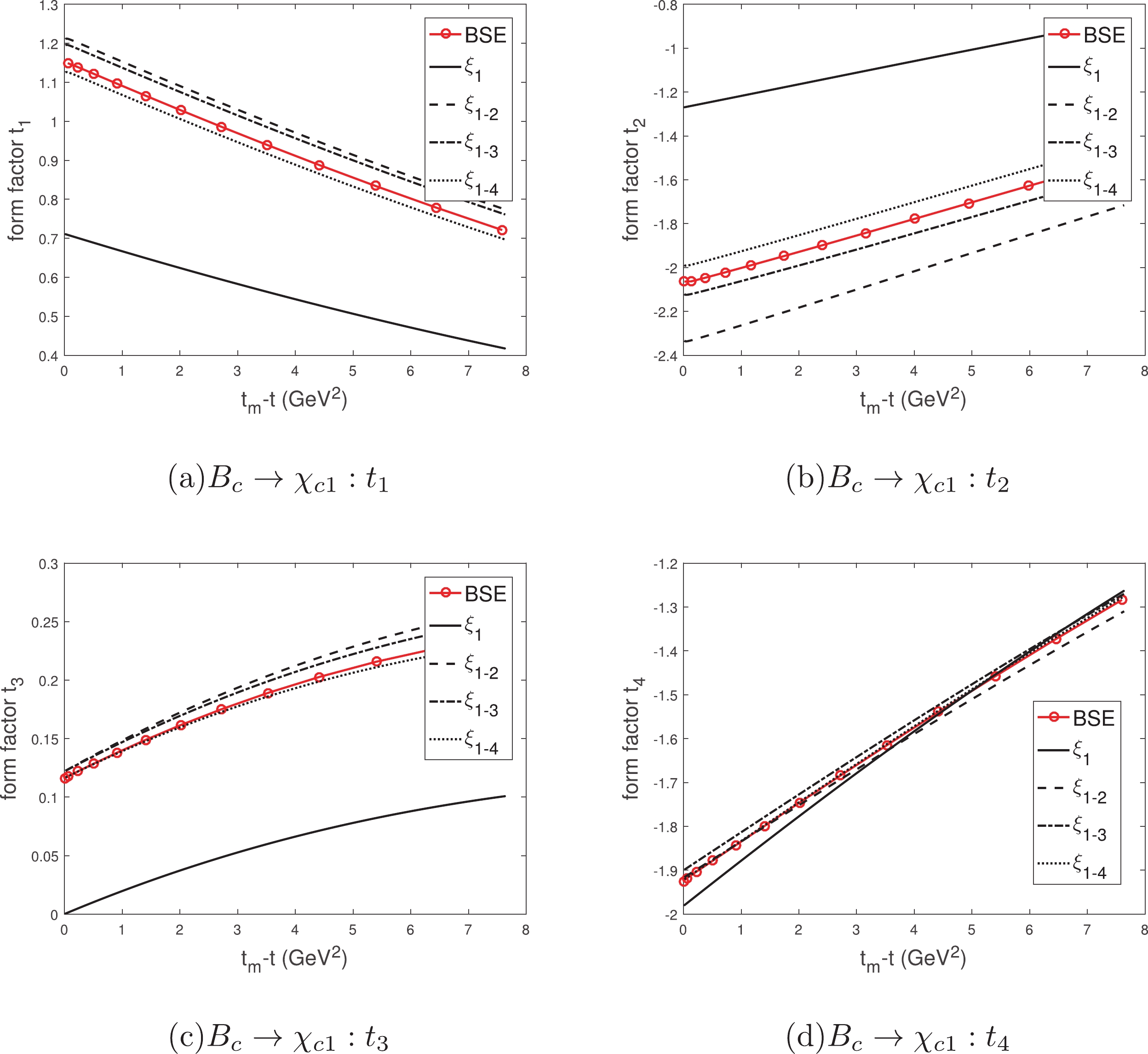
Figure 8. (color online) The form factors of
Bc→χc1 calculated using the IWFs and instantaneous Bethe-Salpeter method, wheret≡(P−Pf)2 is the momentum transfer andtm−t=2MMf(v⋅v′−1) . The meaning of each line type is the same as that in Fig. 6.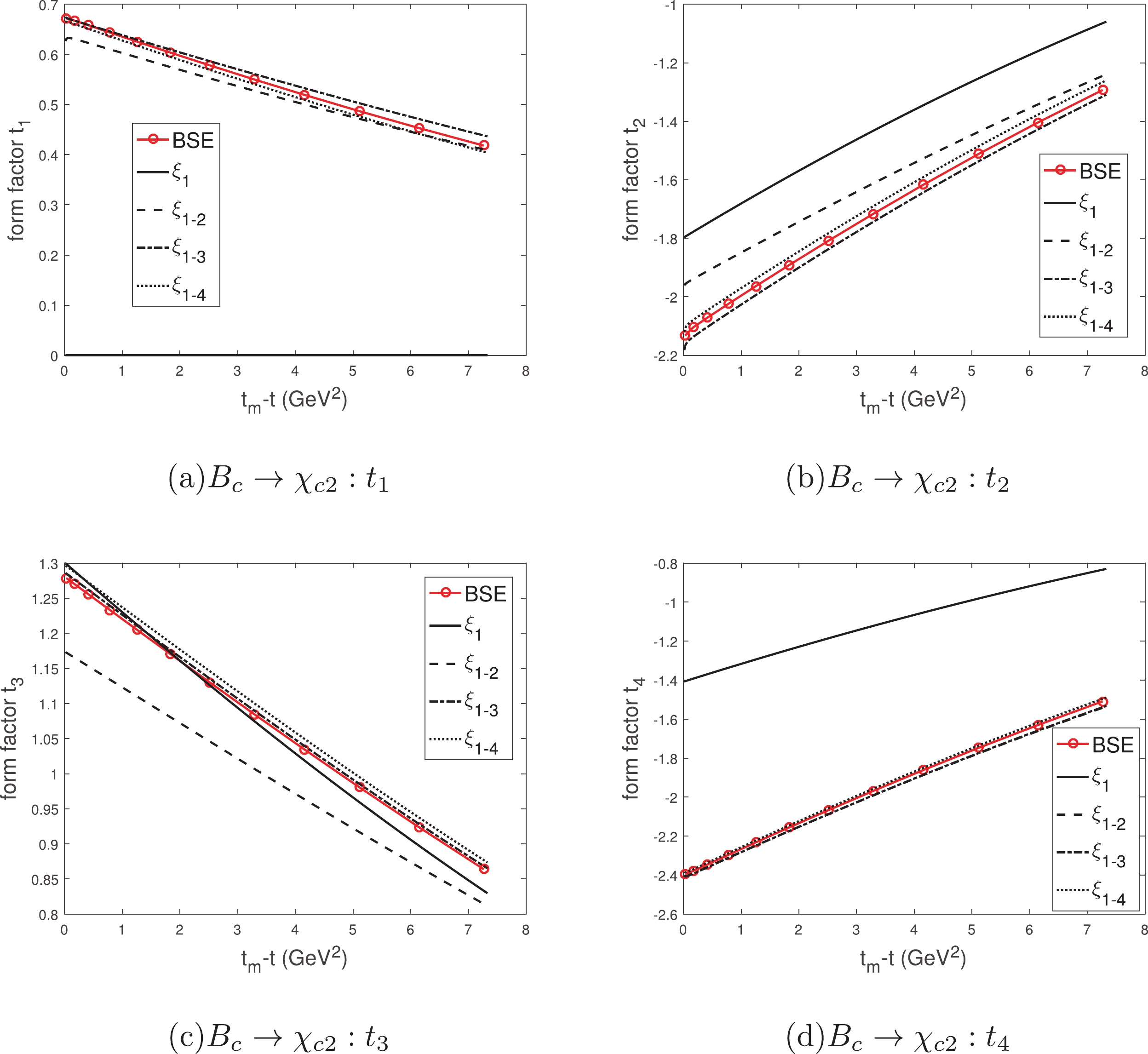
Figure 9. (color online) The form factors of
Bc→χc2 calculated using the IWFs and instantaneous Bethe-Salpeter method, wheret≡(P−Pf)2 is the momentum transfer andtm−t=2MMf(v⋅v′−1) . The meaning of each line type is the same as that in Fig. 6.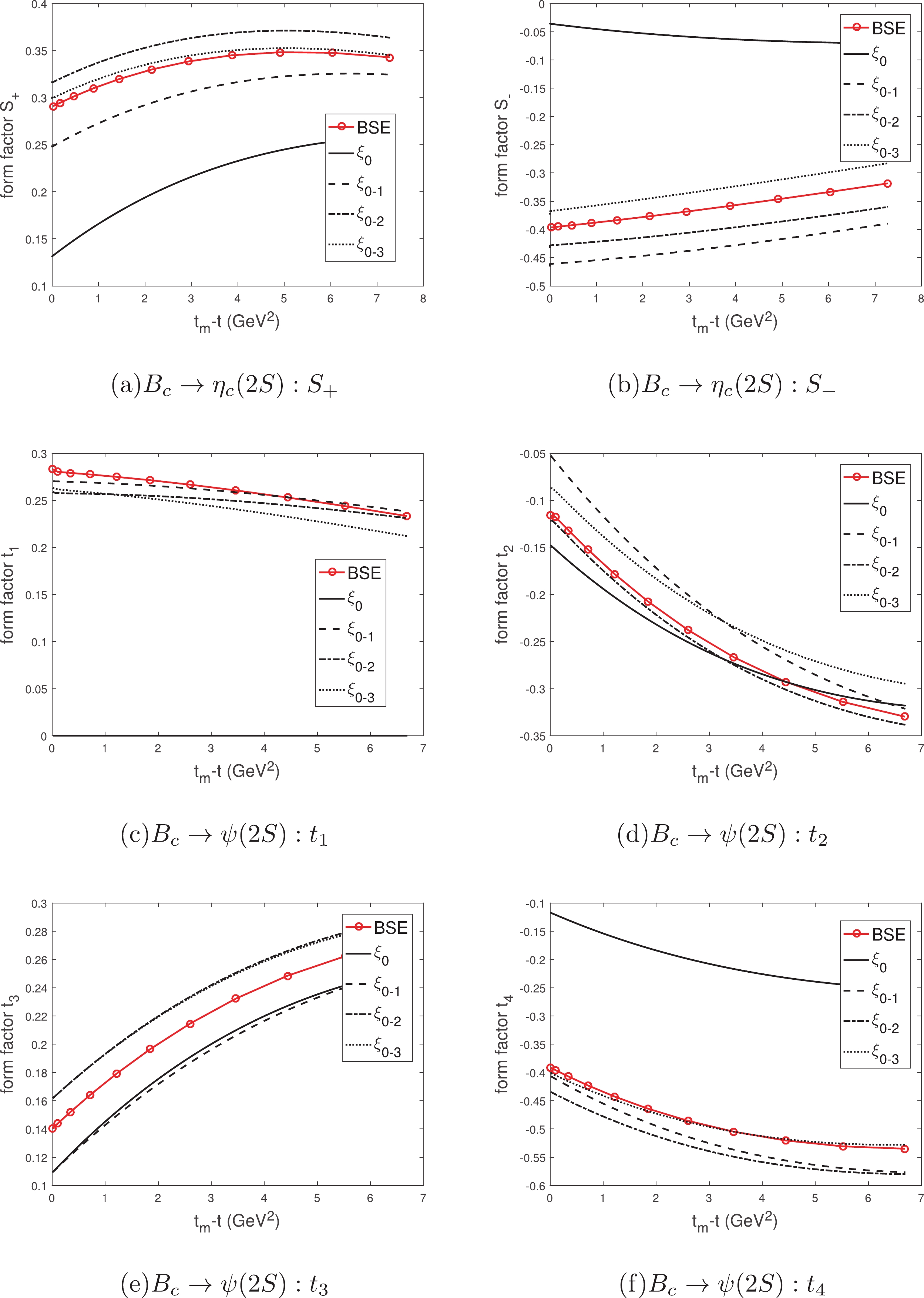
Figure 10. (color online) The form factors of
Bc→ηc(2S),ψ(2S) calculated using the IWFs and instantaneous Bethe-Salpeter method, wheret≡(P−Pf)2 is the momentum transfer andtm−t=2MMf(v⋅v′−1) . The meaning of each line type is the same as that in Fig. 6.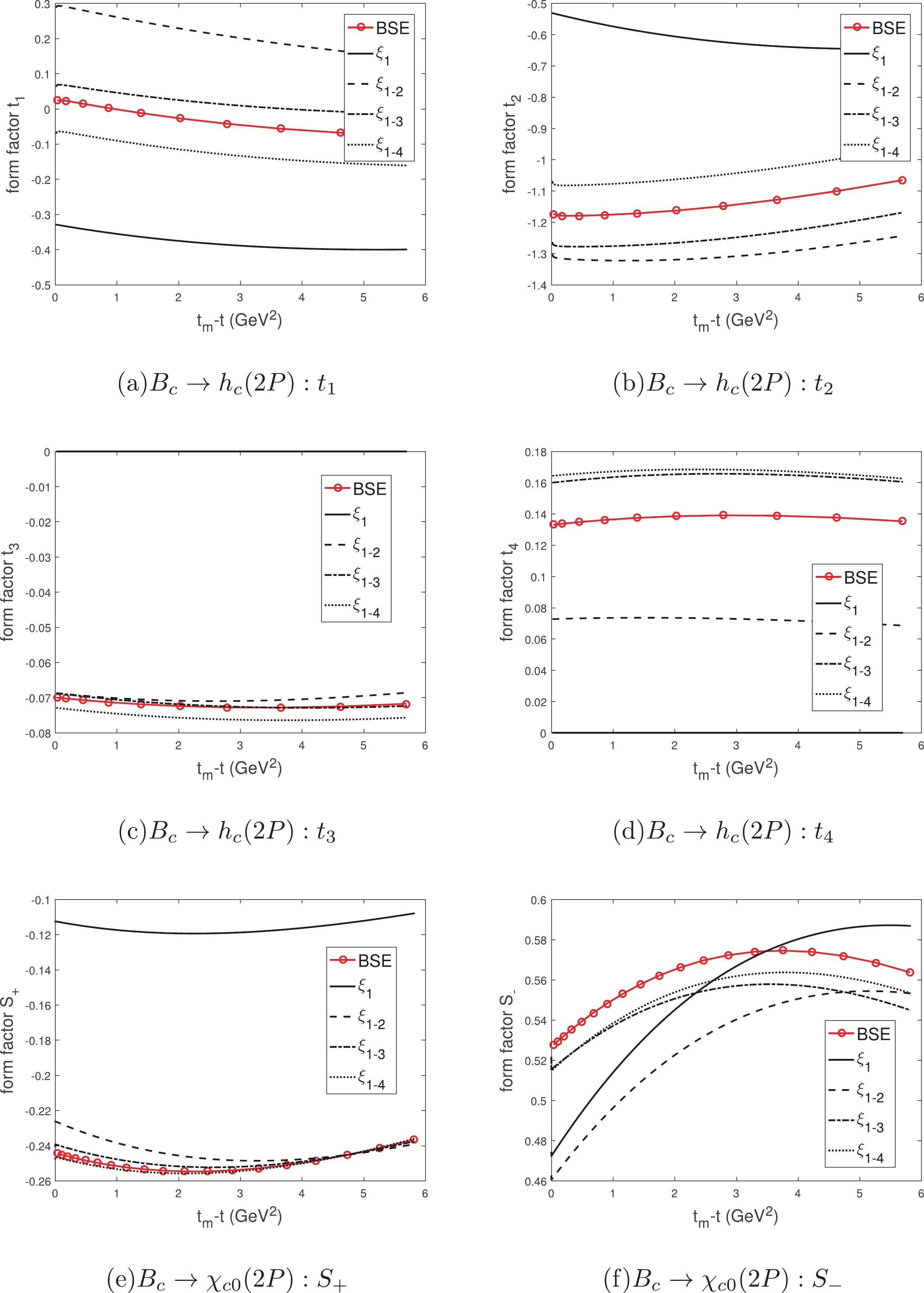
Figure 11. (color online) The form factors of
Bc→hc(2P),χc0(2P) calculated using the IWFs and instantaneous Bethe-Salpeter method, wheret≡(P−Pf)2 is the momentum transfer andtm−t=2MMf(v⋅v′−1) . The meaning of each line type is the same as that in Fig. 6.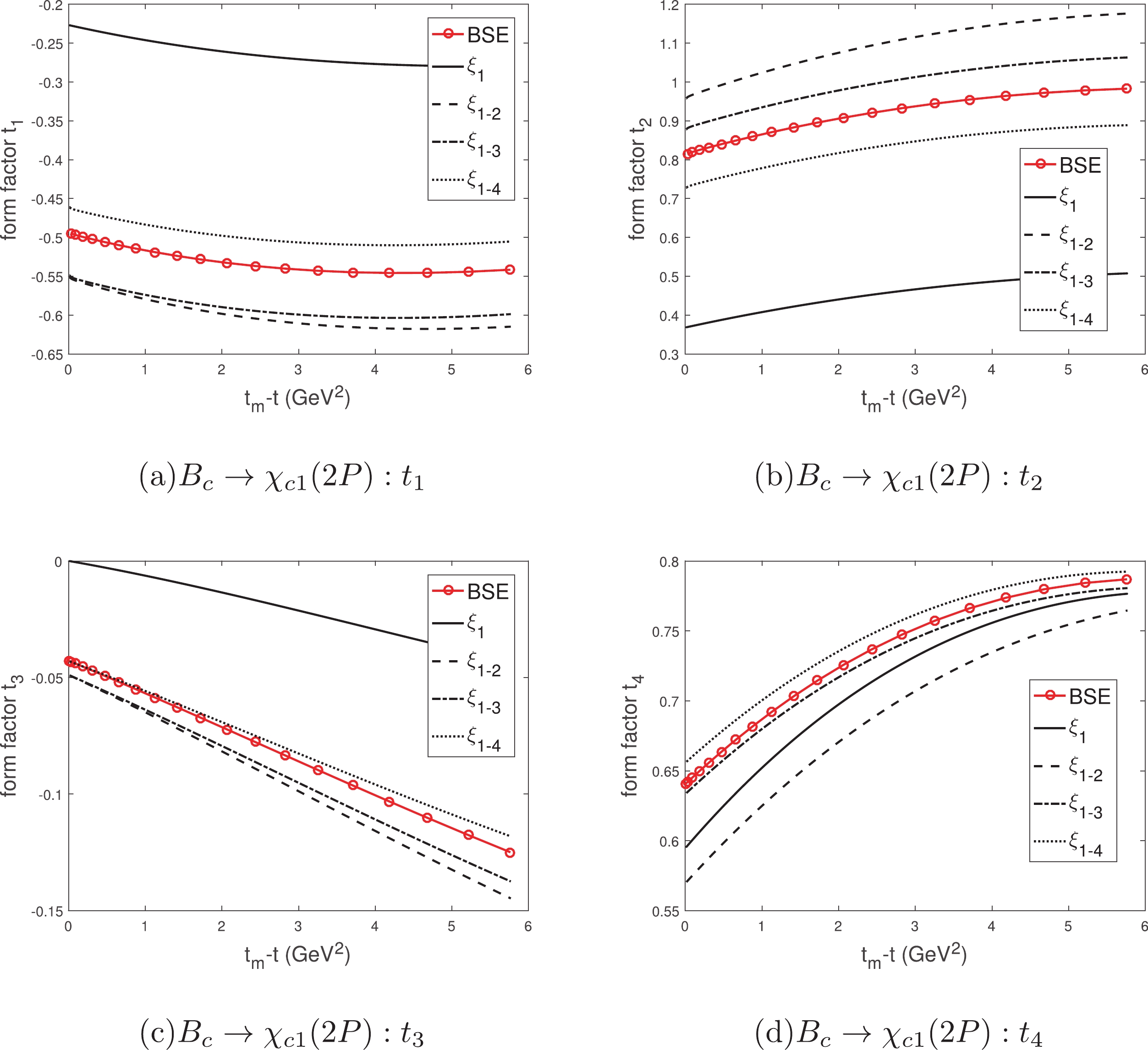
Figure 12. (color online) The form factors of
Bc→χc1(2P) calculated using the IWFs and instantaneous Bethe-Salpeter method, wheret≡(P−Pf)2 is the momentum transfer andtm−t=2MMf(v⋅v′−1) . The meaning of each line type is the same as that in Fig. 6.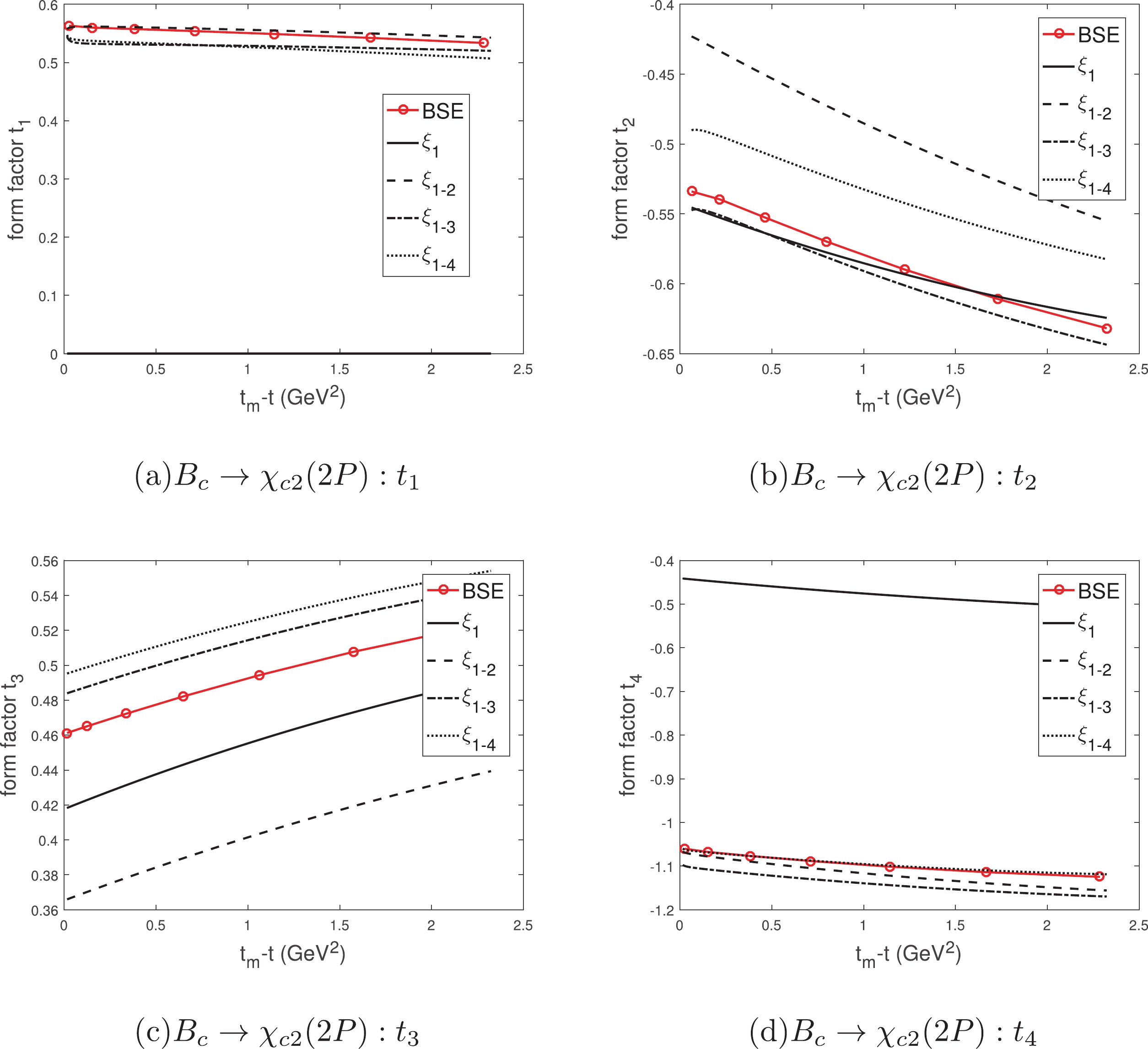
Figure 13. (color online) The form factors of
Bc→χc2(2P) calculated usingt he IWFs and instantaneous Bethe-Salpeter method, wheret≡(P−Pf)2 is the momentum transfer andtm−t=2MMf(v⋅v′−1) . The meaning of each line type is the same as that in Fig. 6.For the process
Bc→ηc , as Figs. 6(a)-6(b) show, there is a gap between the leading orderS+ and the result from the BSE. TheS+ with the 1st correction is close to the BSE. When the 3rd correction is taken into account, the result becomes very accurate. The difference between the LOS− and the BSE is slightly larger, but because of the small contribution ofS− to the decay width, the leading order results may be approximate. Although the high order corrections do not makeS− and BSE exactly the same, they become closer. For the processBc→J/ψ , as Figs. 6(c)-6(f) show, the form factort3 makes the main contribution to the decay width. The LOt3 has a slight gap with the BSE, and the result with high order corrections is more accurate. The LOt1 is zero, which agrees with HQET, see Eq. (22), but is far from the BSE. The LOt2 andt4 are also different from the BSE. The high order corrections bring them closer to the BSE, of which the 1st correction is the most important one. In the mode1S→1S , the leading order form factors, which are parameterized by a single IWFξ00 , may be approximate, but the high order corrections can make the result more precise. Note that the accurate result oft1 cannot be obtained by correctingξ00 ; therefore, we need to introduce new high-order correction functions.For the process
Bc→hc , as Figs. 7(a)-7(d) show, the form factort2 makes the main contribution to the decay width. The LOt2 is slightly different from the BSE. The 1st, 2nd, and 3rd corrections are not small, but they almost cancel each other out. These corrections bringt2 closer to the BSE. The LOt3 andt4 are zero, which can be used to examine our method. Thet1 ,t2 , andt4 with the 1st correction are still quite different from the BSE; therefore, higher order corrections are necessary. For the processBc→χc0 , as Figs. 7(e)-7(f) show, the difference between the LOS+ and the BSE is large. At the least, the 1st correction needs to be considered to reach an approximate result, although theS− with the 1st correction is not accurate enough. The higher order corrections can make the results more accurate. For the processBc→χc1 , as Figs. 8(a)-8(d) show, the form factort2 makes the main contribution to the decay width. The 1st corrections are great, exceptt4 . The higher order corrections are small but still important for accurate calculation. For the processBc→χc2 , as Figs. 9(a)-9(d) show, the form factort3 makes the main contribution to the decay width. The LOt3 is close to the BSE, and the high order corrections almost cancel each other out. This leads to the unusually small result of the total relativistic correction. The 1st correction bringst1 ,t2 , andt4 closer to the BSE, but it makes the main form factort3 farther from the BSE. The result may be more imprecise if only the IWF and 1st correction are considered, so the higher-order corrections are very important. At zero recoil, the IWFξ11 is zero and the kinematic factor(v⋅vf)/|→vf| will lead to the divergence; see Eq. (25). However, most LO form factors are limited values at zero recoil. In general, the relativistic corrections are large, and the 1st corrections can only derive the approximate results in the mode1S→1P .In the modes
1S→2S and1S→2P , the form factors are no longer depressed, but are instead slightly enhanced. The relativistic corrections are similar to those discussed above, but are greater and more complicated, as Figs. 10-13 show. In general, there are large gaps between the leading order form factors and those from the BSE directly. The newly introduced high-order correction functions make significant contributions to these relativistic corrections. -
In this work, we examine the validity of the heavy quark effective theory for double heavy mesons using the instantaneous Bethe-Salpeter method from a phenomenological perspective. With some approximations, all form factors are parameterized by some universal functions
ξqx . These functions are calculated using the overlapping integrals of the phenomenological BS wave functions for the initial state and the final state. We reproduce the classical formulas of the HQET, in which the leading order form factors are parameterized by a single Isgur-Wise functionξ00 . The heavy quark limit is not adopted here; therefore, the IWFξ00 in this paper is the corrected IWF in HQET, which contains the relativistic correction (1/mQ correction). The IWFξ00 is not strictly equal to unity numerically at zero recoil, i.e.,ξ00(1)≠1 .We choose the semileptonic
Bc decays to charmonium to calculate the numerical results of the Isgur-Wise functions and form factors, where the final states include1S ,1P ,2S , and2P . The form factors parameterized by a single corrected IWFξ00 deviate seriously from the full ones, especially when involving the excited states. The deviation requires the introduction of more non-perturbative universal functionsξqx(q≠0) . These functionsξqx(q≠0) are the relativistic corrections (1/mQ corrections) to the leading order results. These functionsξqx primarily depend on the configurationsnL of the initial and final states; thus, they are universal for each mode. These results can simplify the calculations of form factors. This simplification can be generalized to other modes, including but not limited to1S→1P ,1S→2S , and1S→2P , which are studied in this paper. We conclude that the HQET is applicable to these decays in this paper from a phenomenological aspect, but the higher order correction functionsξqx(q≠0) provide large relativistic corrections (1/mQ corrections) and must be introduced. -
The BS equation for a quark-antiquark bound state generally is written as [46]
(⧸p1−m1)χP(q)(⧸p2+m2)=i∫d4k(2π)4V(P,k,q)χP(k),

where
p1,p2;m1,m2 are the momenta and masses of the quark and antiquark, respectively;χP(q) is the BS wave function with total momentum P and relative momentum q; andV(P,k,q) is the kernel between the quark-antiquark in the bound state. P and q are defined as→p1=α1→P+→q,α1=m1m1+m2,→p2=α2→P−→q,α2=m2m1+m2.

We divide the relative momentum q into two parts,
qP|| andqP⊥ , a part parallel to and one orthogonal to P, respectively,qμ=qμP||+qμP⊥,

where
qμP||≡(P⋅q/M2)Pμ,qμP⊥≡qμ−qμP|| , and M is the mass of the relevant meson. Correspondingly, we have two Lorentz-invariant variablesqP=P⋅qM,qPT=√q2P−q2=√−q2P⊥.

If we introduce two notations as follows
η(qμP⊥)≡∫k2PTdkPTds(2π)2V(kP⊥,s,qP⊥)φ(kμp⊥),φ(qμp⊥)≡i∫dqP2πχP(qμP||,qμP⊥).

then the BS equation can take the following form:
χP(qμP||,qμP⊥)=S1(pμ1)η(qμP⊥)S2(pμ2).

The propagators of the relevant particles with masses
m1 andm2 can be decomposed asSi(pμi)=Λ+iP(qμP⊥)J(i)qP+αiM−ωiP+iε+Λ−iP(qμP⊥)J(i)qP+αiM+ωiP−iε,

with
ωiP=√m2i+q2PT,Λ±iP(qμP⊥)=12ωiP[⧸PMωiP±J(i)(⧸qP⊥+mi)],

where
i=1,2 for a quark and antiquark, respectively, andJ(i)=(−1)i+1 .Then, the instantaneous Bethe-Salpeter equation can be decomposed into the coupled equations
(M−ω1p−ω2p)φ++(qP⊥)=Λ+1(P1p⊥)η(qP⊥)Λ+2(P2p⊥),(M+ω1p+ω2p)φ−−(qP⊥)=−Λ−1(P1p⊥)η(qP⊥)Λ−2(P2p⊥),φ+−(qP⊥)=0,φ−+(qP⊥)=0.

The instantaneous kernel has the following form,
V(P,k,q)∼V(|k−q|),

especially when the two constituents of the meson are very heavy. The kernel we use contains a linear scalar interaction for color-confinement, a vector interaction for one-gluon exchange, and a constant
V0 as a "zero-point," i.e.,I(r)=λr+V0−γ0⊗γ043αs(r)r,

where
λ is the "string constant" andαs(r) is the running coupling constant. To avoid the infrared divergence, a factore−αr is introduced, i.e.,Vs(r)=λα(1−e−αr),Vv(r)=−43αs(r)re−αr.

In momentum space, the kernel reads:
I(→q)=Vs(→q)+γ0⊗γ0Vv(→q),

where
Vs(→q)=−(λα+V0)δ3(→q)+λπ21(→q2+α2)2,Vv(→q)=−23π2αs(→q)→q2+α2,αs(→q)=12π271In(a+→q2/Λ2QCD).

The fitted parameters are
a=e=2.7183 ,α=0.06 GeV,λ=0.21 GeV2 , andΛQCD=0.27 GeV;V0 is fixed by fitting the mass of the ground state. With these parameters, the mass spectra, decay constants, and some branching fractions of the double heavy mesons, includingBc , charmonium, and bottomium, can be obtained. These results are in good agreement with the experimental data. More details can be found in the literature [47, 48].The instantaneous Bethe-Salpeter wave function for
2++ state mesons has the general form [41]φ2++(q⊥)=ϵμνqμ⊥qν⊥[ζ1(q⊥)+⧸PMζ2(q⊥)+⧸q⊥Mζ3(q⊥)+⧸P⧸q⊥M2ζ4(q⊥)]+Mϵμνγμqν⊥[ζ5(q⊥)+⧸PMζ6(q⊥)+⧸q⊥Mζ7(q⊥)+⧸P⧸q⊥M2ζ8(q⊥)]

with
ζ1(q⊥)=q2⊥ζ3(ω1+ω2)+2M2ζ5ω2M(m1ω2+m2ω1)ζ2(q⊥)=q2⊥ζ4(ω1−ω2)+2M2ζ6ω2M(m1ω2+m2ω1)ζ7(q⊥)=M(ω1−ω2)m1ω2+m2ω1ζ5ζ8(q⊥)=M(ω1+ω2)m1ω2+m2ω1ζ6.

The wave function corresponding to the positive projection has the form
φ++2++(q⊥)=ϵμνqμ⊥qν⊥[B1(q⊥)+⧸PMB2(q⊥)+⧸q⊥MB3(q⊥)+⧸P⧸q⊥M2B4(q⊥)]+Mϵμνγμqν⊥[B5(q⊥)+⧸PMB6(q⊥)+⧸q⊥MB7(q⊥)+⧸P⧸q⊥M2B8(q⊥)],

where
B1=12M(m1ω2+m2ω1)[(ω1+ω2)q2⊥ζ3+(m1+m2)q2⊥ζ4+2M2ω2ζ5−2M2m2ζ6]B2=12M(m1ω2+m2ω1)[(m1−m2)q2⊥ζ3+(ω1−ω2)q2⊥ζ4+2M2ω2ζ6−2M2m2ζ5]B3=12[ζ3+m1+m2ω1+ω2ζ4−2M2m1ω2+m2ω1ζ6]B4=12[ω1+ω2m1+m2ζ3+ζ4−2M2m1ω2+m2ω1ζ5]B5=12[ζ5−ω1+ω2m1+m2ζ6],A6=12[−m1+m2ω1+ω2ζ5+ζ6]

B7=M2ω1−ω2m1ω2+m2ω1[ζ5−ω1+ω2m1+m2ζ6]B8=M2m1+m2m1ω2+m2ω1[−ζ5+ω1+ω2m1+m2ζ6].

If the masses of the quark and antiquark are equal, the normalization condition is
∫d→q(2π)38ω1→q215m1[5ζ5ζ6M2+2ζ4ζ5→q2−2→q2ζ3(ζ4→q2M2+ζ6)]=2M.

Isgur-Wise function in Bc decays to charmonium with the Bethe-Salpeter method
- Received Date: 2020-04-22
- Accepted Date: 2020-08-05
- Available Online: 2021-01-15
Abstract: The heavy quark effective theory vastly reduces the weak-decay form factors of hadrons containing one heavy quark. Many works attempt to directly apply this theory to hadrons with multiple heavy quarks. In this paper, we examine this confusing application by the instantaneous Bethe-Salpeter method from a phenomenological perspective, and give the numerical results for






 Abstract
Abstract HTML
HTML Reference
Reference Related
Related PDF
PDF












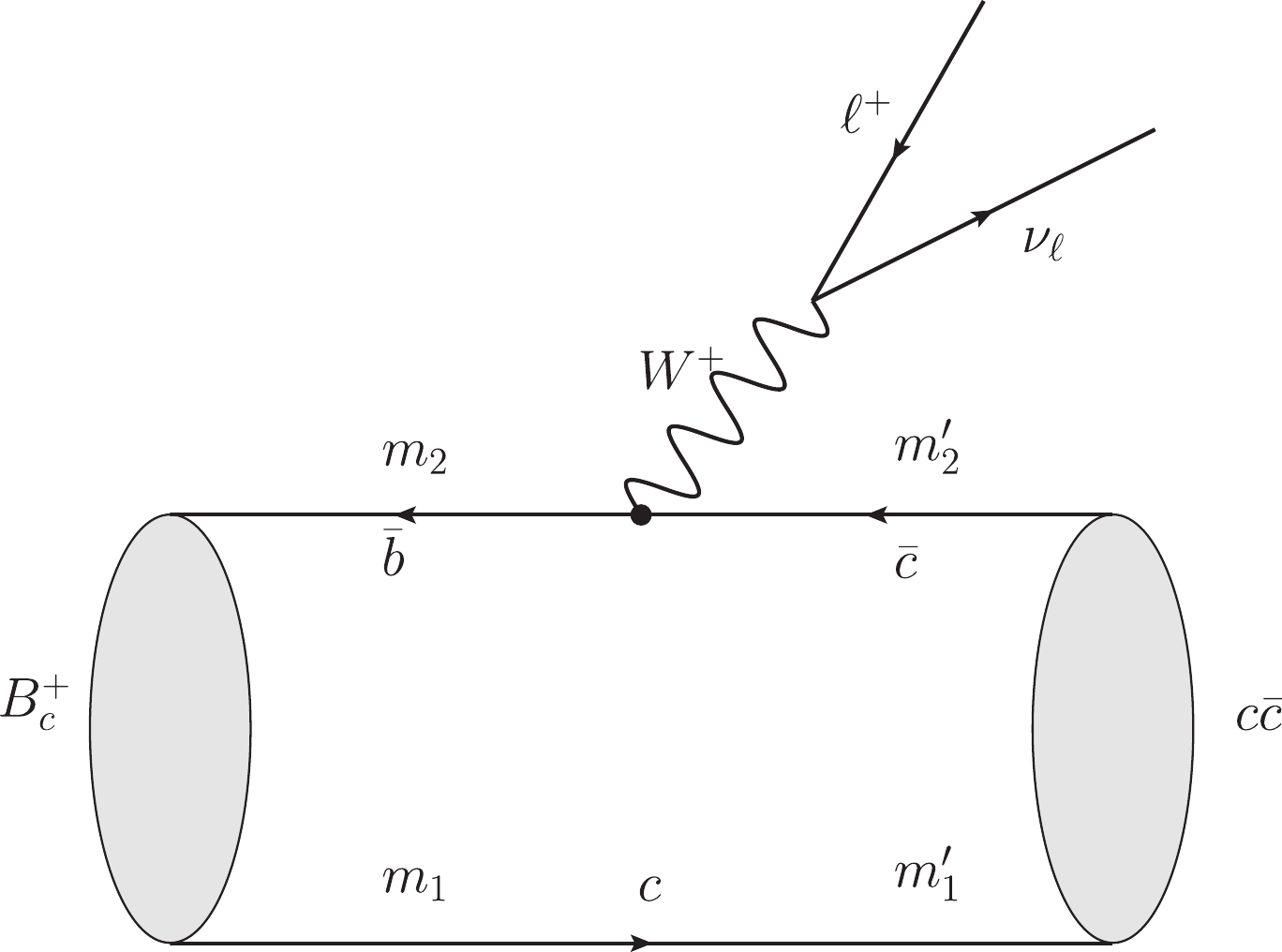










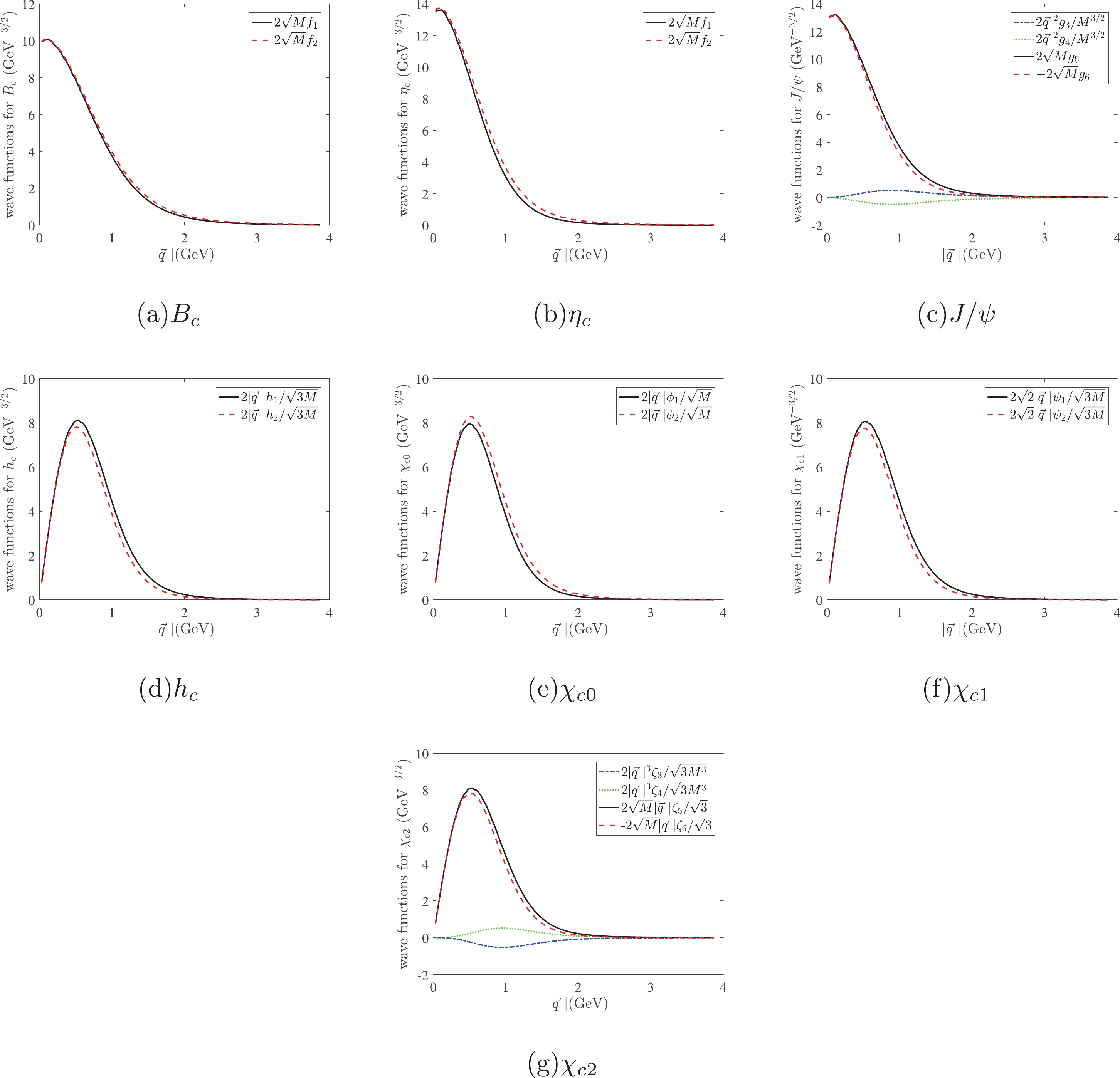
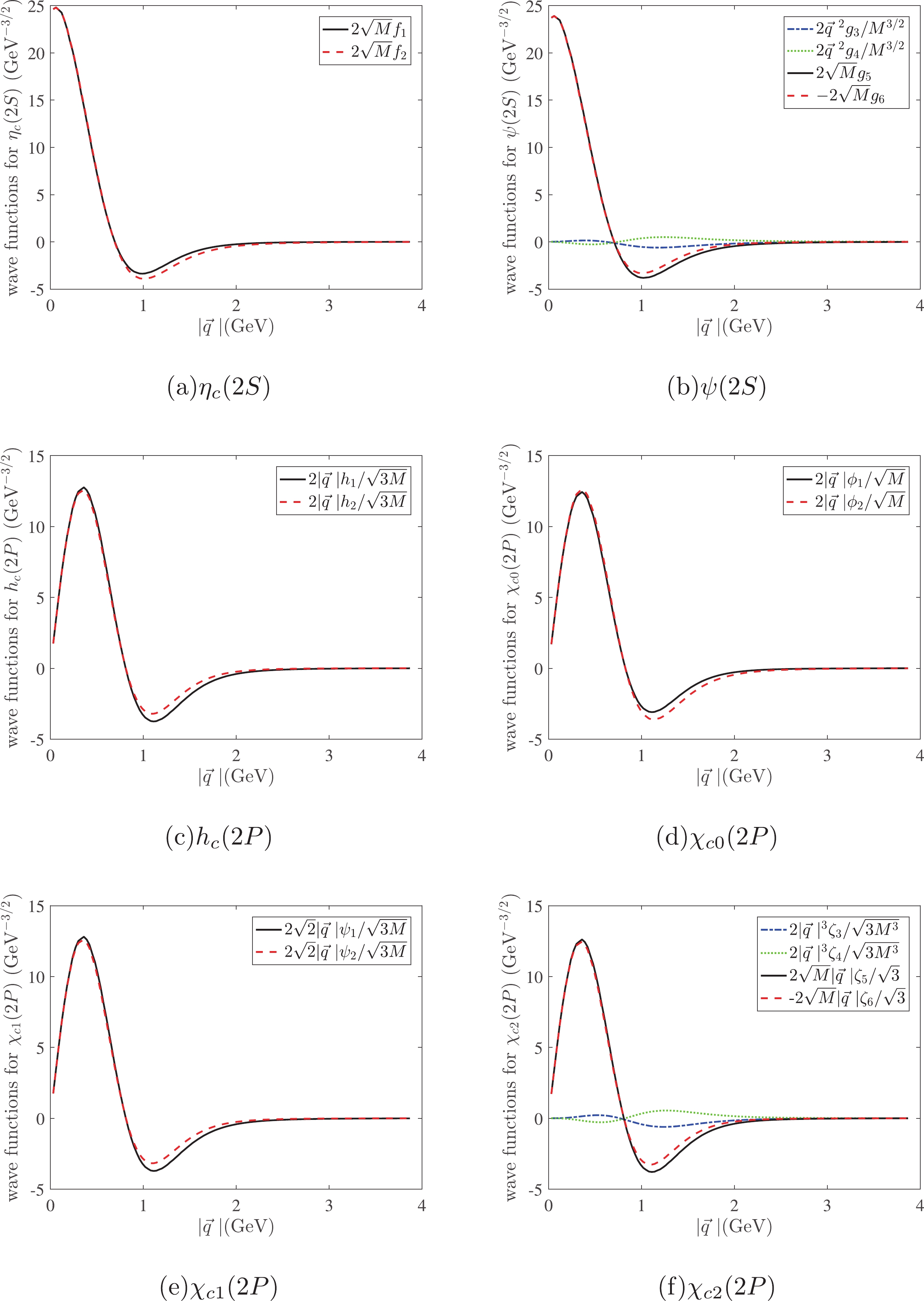



 DownLoad:
DownLoad: